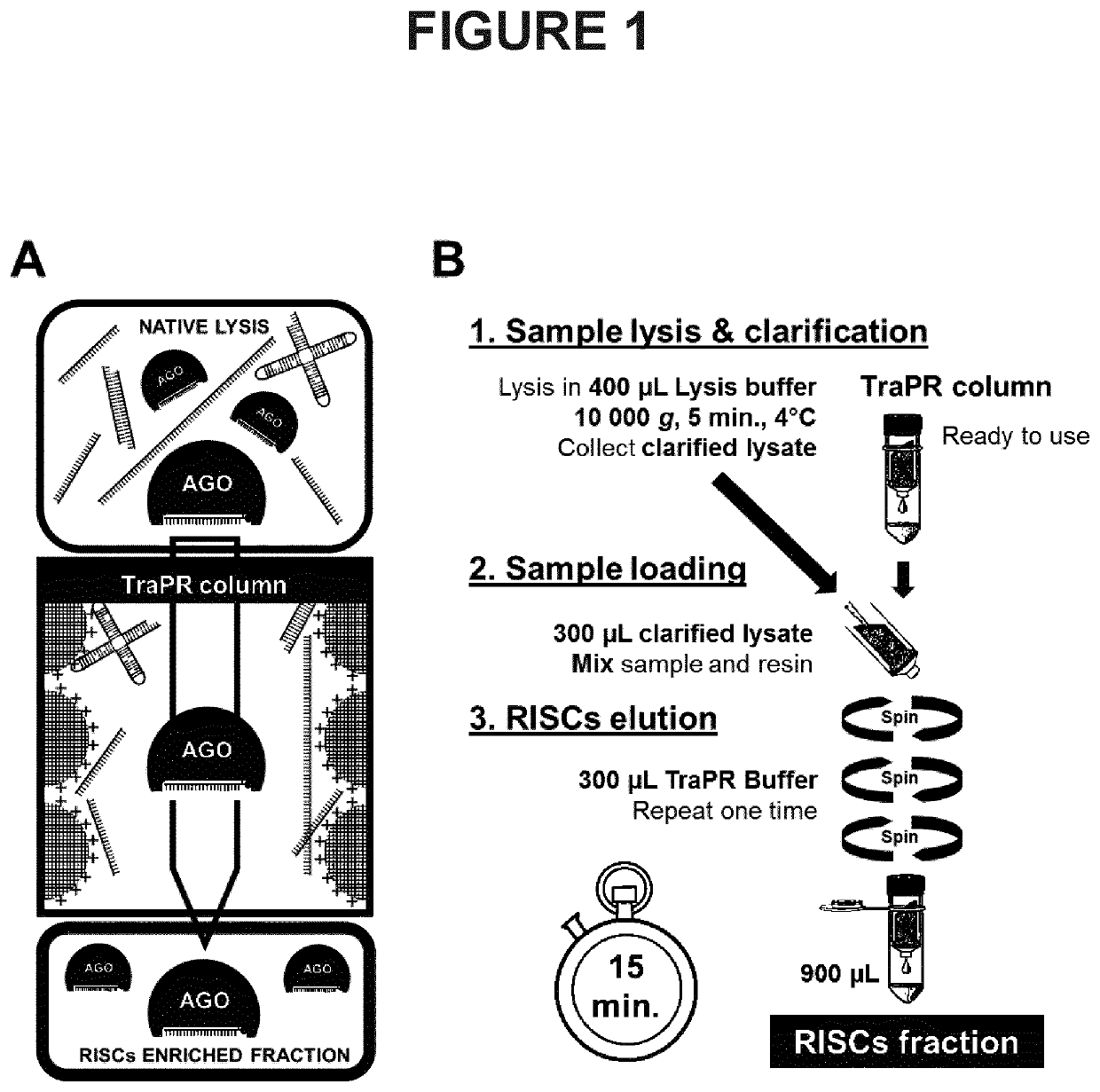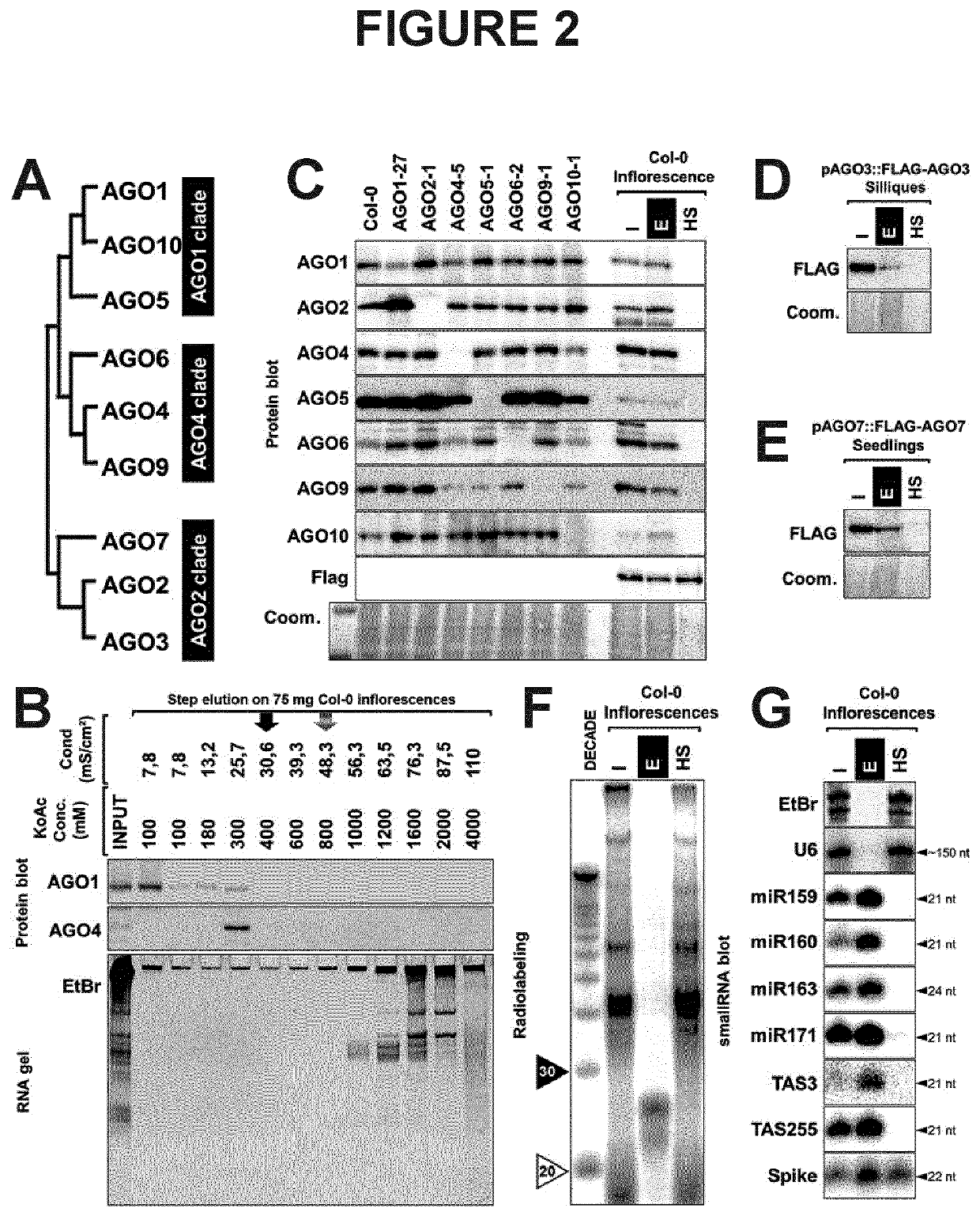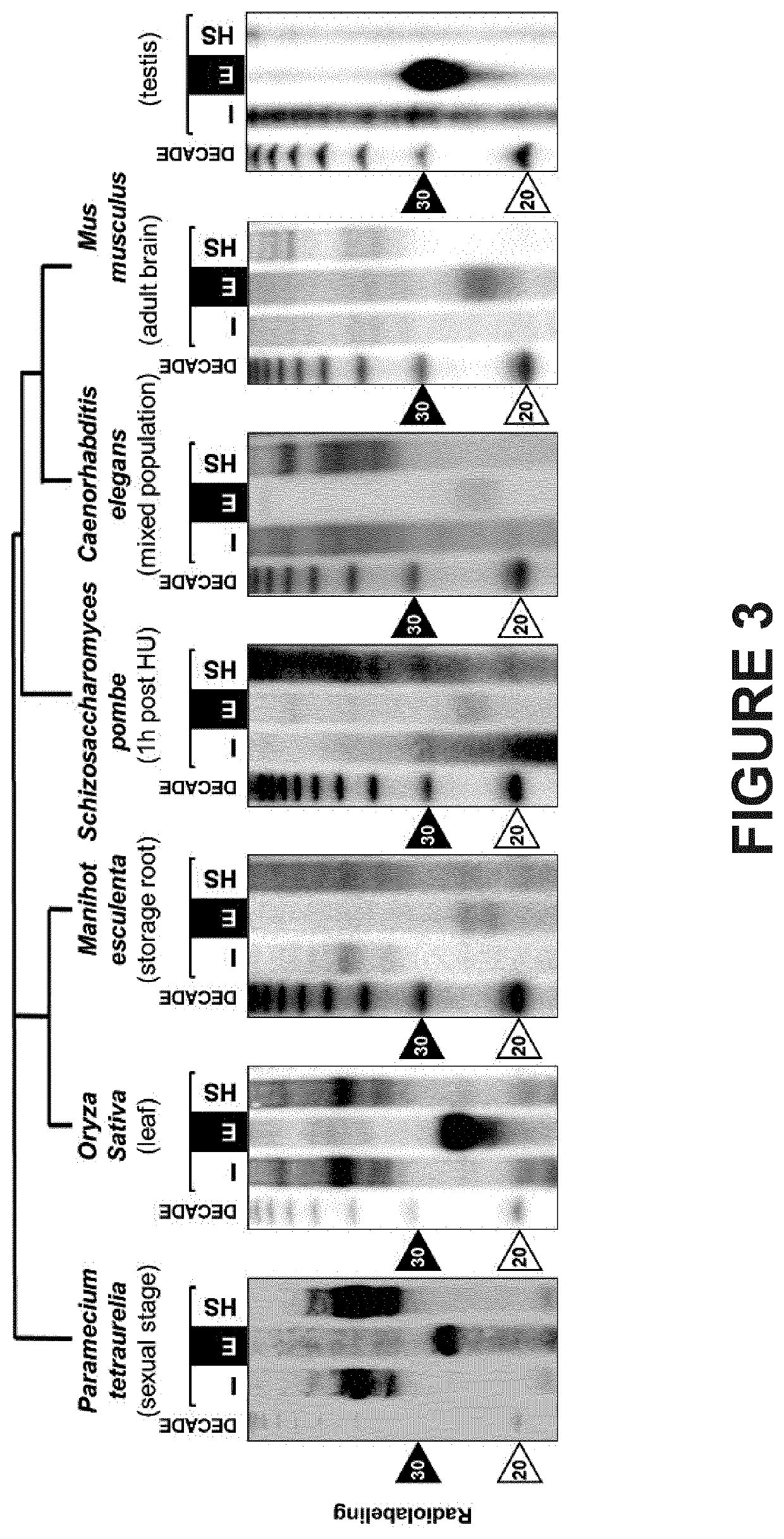Method and kit for the purification of functional risc-associated small rnas
a technology of functional risk and small rnas, which is applied in the field of methods and kits for the purification of functional risk-associated small rnas, can solve the problems of limited detection of the technique, inaccessible information on individual sirna species, and low abundance of srna species that are often undetectabl
- Summary
- Abstract
- Description
- Claims
- Application Information
AI Technical Summary
Benefits of technology
Problems solved by technology
Method used
Image
Examples
embodiments
[0135](1) A method for the purification of RISC-associated sRNAs, comprising the following steps:[0136]a) providing a native sample derived from a biological specimen;[0137]b) lysing the sample using a native lysis buffer;[0138]c) selectively removing non RISC-associated nucleic acids from the lysate; and[0139]d) collecting RISCs comprising RISC-associated sRNAs.
[0140](2) A method according to embodiment (1), wherein in step c), non-RISC associated nucleic acids are removed from the lysate by loading the lysate onto a column comprising a resin allowing the fixation of nucleic acids.
[0141](3) A method according to embodiment (1) or (2), wherein the lysis buffer comprises or consists of 20 mM HEPES-KOH (pH 7.9), 10 to 20% (v:v) glycerol, 1.5 mM MgCl2, 0.2 mM EDTA, 1 mM DTT and 100 mM CH3CO2K and 0.1% Triton X-100, with a measured conductivity from 7.5 to 8.5 mS / cm2.
[0142](4) A method according to embodiment (1) or (2), wherein in step d) RISCs are collected by applying an elution buff...
example 1
[0161]Principle of the Method According to the Invention
[0162]The scheme presented in FIG. 1A depicts the principle of the method according to the invention. A native lysate is produced from the biological sample in a manner so as to preserve non-covalent interactions between AGO proteins and associated sRNAs. The lysate is mixed with a positively charged resin allowing the fixation of the non-AGO-loaded nucleic acids onto the resin whereas RISCs, which are not fixed, can be eluted. The separation procedure, based on the charge difference between RISC-associated RNAs and other cellular nucleic acids, generates a RISCs-enriched fraction (called E fraction). To control the procedure, the retained free nucleic acids can be eluted in a distinct fraction (referred to as HS fraction) using a high salt buffer.
[0163]Detailed Procedure for the Use of Mini-TraPR Kit
[0164]As depicted in the scheme presented in FIG. 1B, the procedure entails three main steps. The sample is lysed in the native l...
example 2
[0231]Arabidopsis AGOs and Their Associated sRNAs Co-Purify in the RISCs-Enriched E Fraction According to the Method of the Invention
[0232]The Arabidopsis thaliana genome encodes 10 paralogous AGO genes of which 9 are expressed as proteins classified into 3 major phylogenetic clades, as depicted in FIG. 2A. Immunoblot analysis of two major AGO proteins (AGO1 and AGO4) from Arabidopsis inflorescences subjected to elution from the column obtained by applying buffer with increasing concentration of salt, of which the conductivity was monitored (FIG. 2B, top). The RNAs contained in the fractions were extracted and subjected to migration on 17% acrylamide gel, then stained with ethidium bromide (FIG. 2B, bottom). Analysis of the elution profile reveals that the two main Arabidopsis AGO proteins are eluted from the column before mild salt concentration buffer is applied (black arrow), as opposed to RNAs that are retained on the resin until higher salt concentration are reached (dashed arr...
PUM
| Property | Measurement | Unit |
|---|---|---|
| pH | aaaaa | aaaaa |
| volume | aaaaa | aaaaa |
| volume | aaaaa | aaaaa |
Abstract
Description
Claims
Application Information
 Login to View More
Login to View More - R&D
- Intellectual Property
- Life Sciences
- Materials
- Tech Scout
- Unparalleled Data Quality
- Higher Quality Content
- 60% Fewer Hallucinations
Browse by: Latest US Patents, China's latest patents, Technical Efficacy Thesaurus, Application Domain, Technology Topic, Popular Technical Reports.
© 2025 PatSnap. All rights reserved.Legal|Privacy policy|Modern Slavery Act Transparency Statement|Sitemap|About US| Contact US: help@patsnap.com



